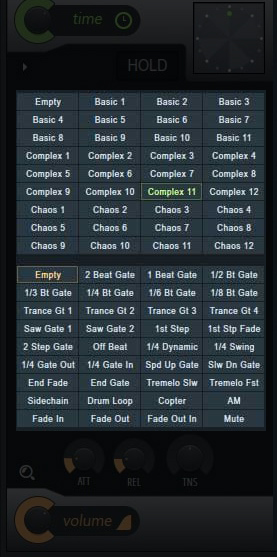- Gross Beat Ableton Mac
- Gross Beat Ableton Live
- Gross Beat Ableton Free Plugin Free
- Gross Beat Ableton Live
Gross Beat is easy to use but reaches limitations, ala 2 bar buffer. I will say that Gross Beat handles scratch type sounds better that Lucifer though. I think both programs fail at scratch emulation TBH. Pinky is the only answer for scratching inside Ableton at the moment, but I have yet to try it. More Gross Beat! Since Gross Beat is a VST plugin effect, you can save and load presets in the Plugin Options section. Gross Beat presets can be found for free or for sale around the internet, and a simple Google search will hook you up. VSTs Like Gross Beat. If you’re using a Mac system or have a more limited budget, you might be looking for.

STEP 1 – Creating a Trigger Finger Preset: Open Enigma and create a preset for your Trigger Finger, assigning a range of 16 consecutive notes (e.g., 0-15).

MIDI Note Number Reference Table
Gross Beat Ableton Mac
The MIDI Note Number Reference Table indicates the MIDI Note Values that you have to use in Enigma to assign a particular note range to the Trigger Finger pads.
You can use any set of 16 consecutive values, but they should go up in value from left to right then from top to bottom if you wish to mirror the Time slots in Gross Beat.

In the GUI of Enigma, bring up the Trigger Finger device view, and click on the note symbol on each pad to bring up the Editor window and assign the “Pgm./Note” value. The image below demonstrates how to assign a value of 6 for Pad P11. The numbers next to each pad represent the “Pgm./Note” value to assign (e.g., a value of 7 for Pad P12, a value of 8 for Pad P5, etc.).
This example shows an assigned range of consecutive notes from C-2 to D#-1 (i.e., MIDI Notes 0-15) that will correspond to the first 16 Time slots in Gross Beat.
NOTE: The Trigger Finger allows up to 16 presets to be uploaded to the device, so you can create additional presets to control more than 16 time slots (e.g., create two presets – one for time slots 1-16 (MIDI note values 0-15) and the other for time slots 17-32 (MIDI note values 16-31)). However, you would need to change program banks on your Trigger Finger to do so while performing to load the different presets.
Upload your program to the Trigger Finger once you have assigned all of the notes to the 16 pads on the Trigger Finger (remember your preset number). Note: close Enigma otherwise there is a chance that it may have trouble recognizing Trigger Finger in Ableton.
STEP 2 – Using Gross Beat in Ableton: Open up Ableton and select the “IL Gross Beat” VST plug-in and drag it into your desired Channel – the display should look like this (the wording “Empty” below the “Time Slot” slider will be whatever the first time slot is named in Gross Beat):
Turn on the MIDI Map Mode and click on the “Time slot” control. Then hold down the pad on the Trigger Finger corresponding to the lowest MIDI note value (in my example above this would be pad P13 with a MIDI note value of 0), and keep holding while you press the pad corresponding to the highest MIDI note value (in my example this would be pad P4 with a MIDI note value of 15).

This will assign the note range of the Time Slots in Gross Beat, but in the “MIDI Mappings” window you first have to adjust the Max range value from 1.00 to 0.44 in order for it to correspond correctly to the 16 pads (i.e., 16/36 slots = 0.44).
Note: if you want to control the “Volume slot” in Gross Beat you could simply MIDI Map the same way. Give it a try!
You can buy Gross Beat at the Image Line shop – present the code HDIBEGH491 and get 10% off (or follow this link to go directly to the Image Line shop with the code already applied).
Posted in Ableton, Gross Beat, Hardware, Music Performance, Music Production, Trigger Finger, VST Plugins, VST Plugins